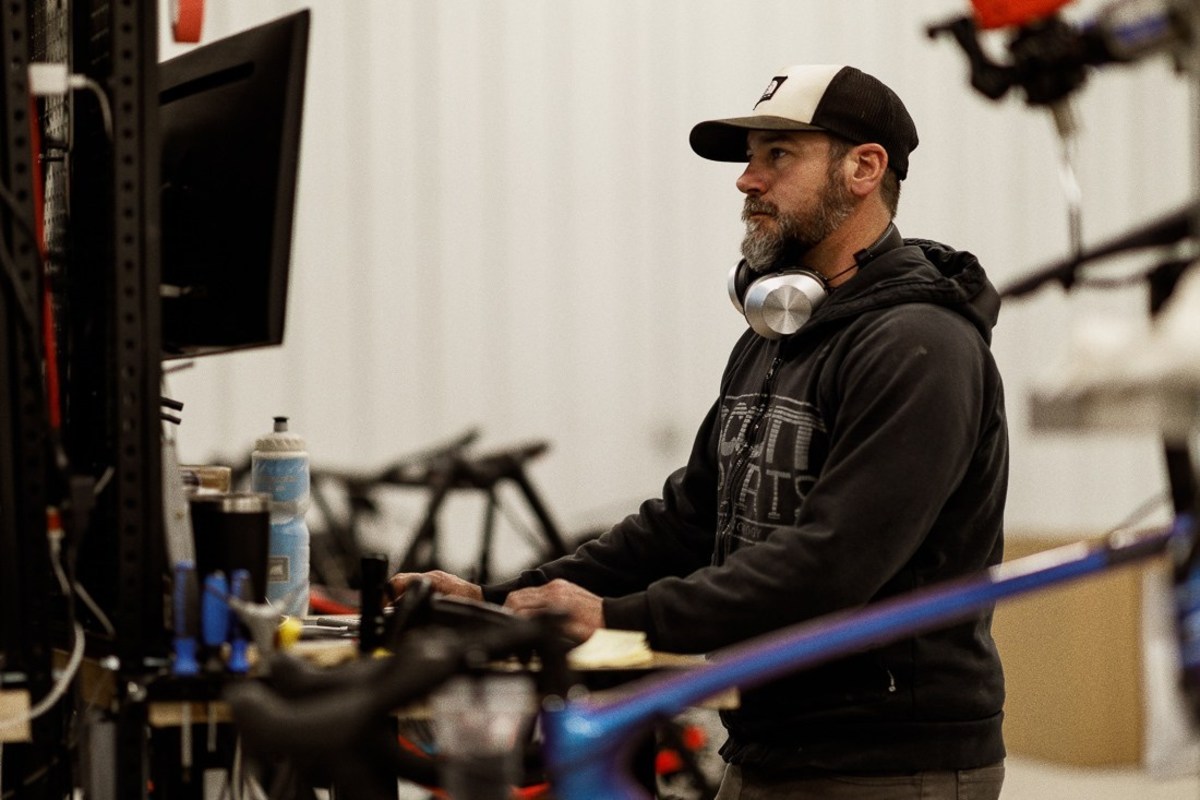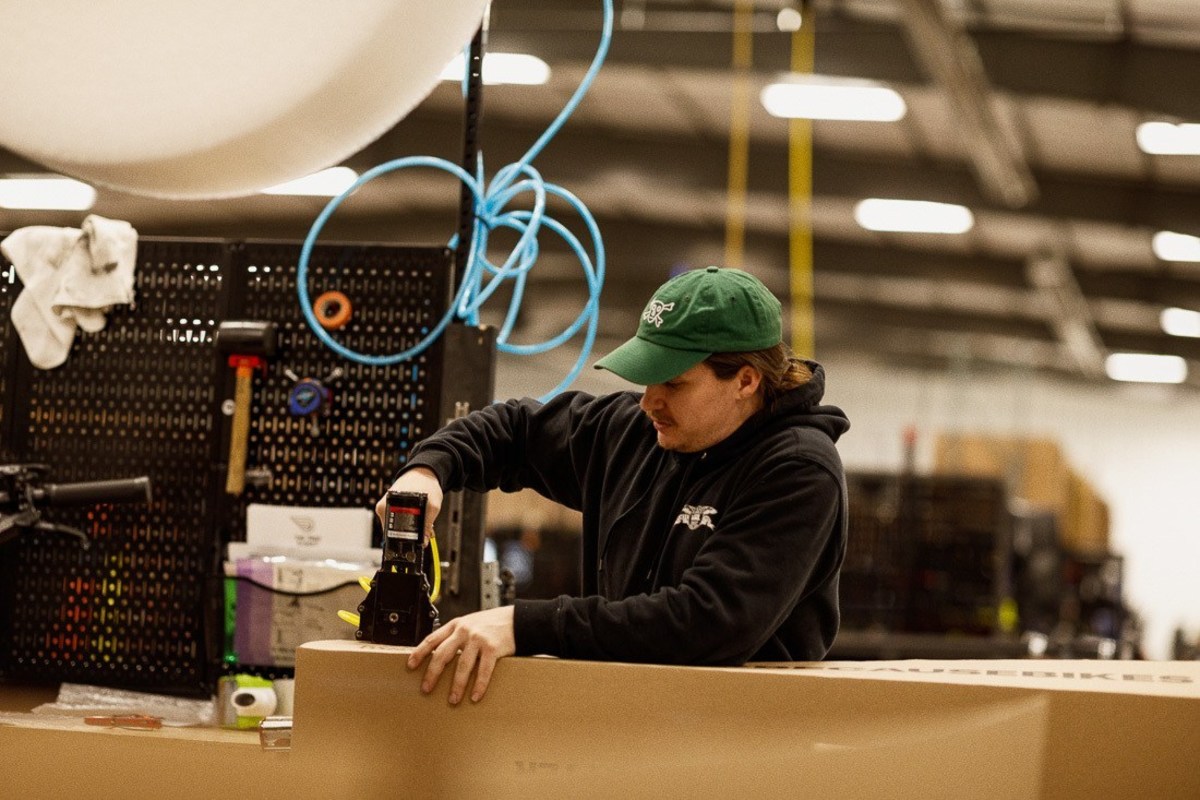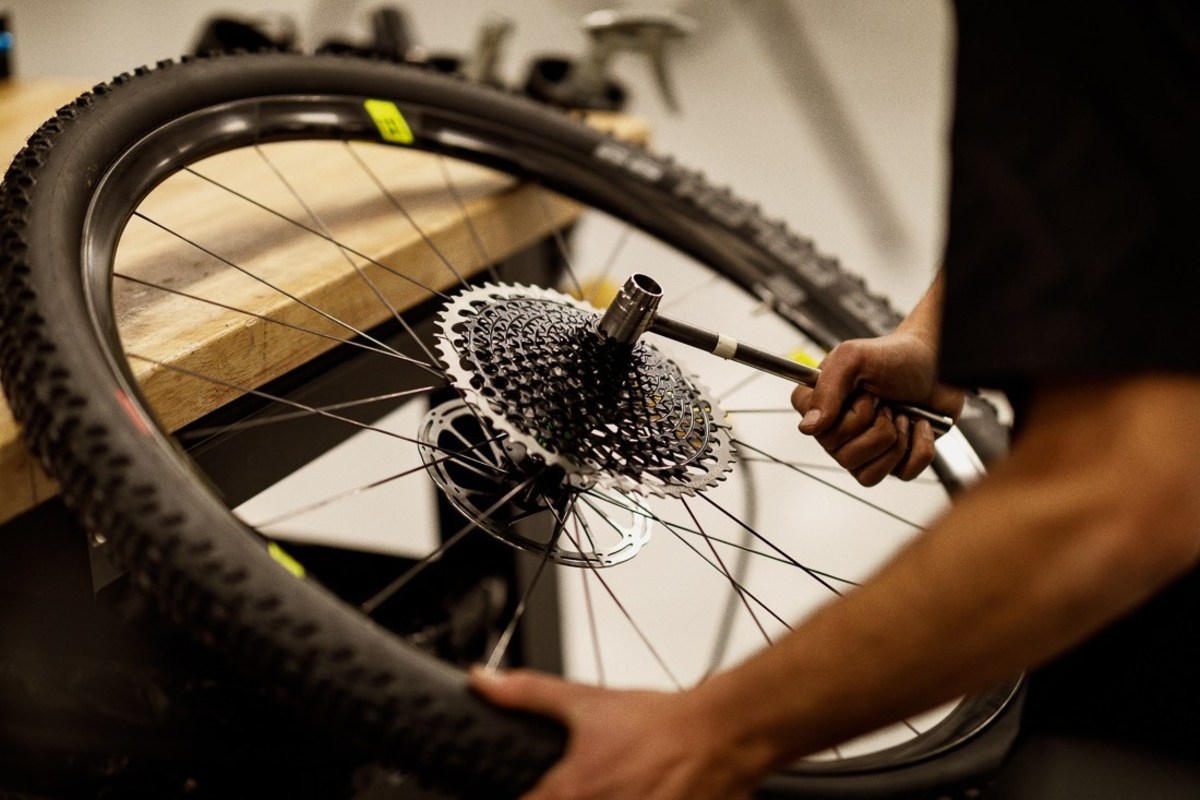I love giving bike advice. I technically do it for a living, but only in a remote, aggregate sense. I used to do it one-on-one back in my shop days, and I kinda miss it. Now, I find myself baiting innocent strangers into conversations about things like transportation and exercise in the hopes that they’ll exhibit some sort of curiosity about bikes. That’s when I slip into my well-practiced and frankly very effective former role as a bike salesman. Within ten minutes, I’ve hopefully gotten someone stoked about what their next bike could and should be. But it takes a little longer if the topic of used bikes comes up.
“I don’t wanna go crazy,” they tell me. “A bike from a few years ago would be just fine.” Nonsense. Is reading a newspaper from a few years ago just fine? There’s a reason they keep printing new ones. Things change. If you buy a bike from 2014, there are features it won’t have that today’s bikes will. A wide-range cassette or a seat tube angle steeper than 73 degrees, for example. As soon as you learn what you’re missing, you’ll miss it.
But it feels like that’s different now. The rate of evolution in bike design slowed, or at least shifted directions. The updates from one model year to the next have became more subtle. Suddenly, bikes from two or three years ago don’t feel as out of date as they used to seem back… well… back two or three years ago. That happens to be about when I learned of The Pro’s Closet. If you haven’t heard of them, The Pro’s Closet is essentially an online used bike reseller. I’ll get to my experience buying and selling a bike with them in a minute, but the backstory is just as interesting.

Their story started in 2006, when an ebay-savvy pro mountain biker named Nick Martin started selling off the gear he’d collected throughout his career. He then moved on to doing the same for his fellow racers, and eventually expanded the service to the general public. But still, The Pro’s Closet was based around ebay, which made his business appear more like a hobby for a stay-at-home parent and less like a growing disruptive force in the high-end bike industry. But that’s exactly what it’s become.
In late 2015, The Pro’s Closet moved (then still in its home town of Boulder, Colorado) from a 5,000-foot facility to one three times the size. It’s continued to expand since then, and now occupies more than ten times the space it used to. Through its history, they experimented with other sports equipment, but they hit a sweet spot in cycling. On the peer-to-peer used market, there’s an unhealthy combination of high price and low trust. The buyer has no redress if something goes wrong, so some choose to be extremely picky, some lowball, some don’t buy at all. And sellers risk leaving money on the table with no trusted standard for what used bikes are worth. The market was ripe for someone to solve that.
And soon after that first expansion, The Pro’s Closet was showing enough promise to secure a $2.6-million investment from venture capital firm, Range Light (now called Ridgeline Ventures) in 2016. And then a staggering $9 million in 2019 from Ridgeline and Colorado’s The Foundry Group. And most recently a $4.5-million investment, also from Ridgeline and Foundry. That all seems completely foreign in the bike industry, where that kind of VC investment is not common. But the concept behind The Pro’s Closet has the flavor of Airbnb and Uber. It’s very current. You might associate it with buzzwords like “the shared economy.” Also “recommerce,” which was a new word to me, but it’s the industry that produced my refurbished iPhone 6.
“Recomerce has a lot of VC and private equity eyes on it, as it’s a whole different market,” explains Travis Erwin, Chief Revenue Officer at The Pro’s Closet. “And when you think of millennials and new consumers, they’re not concerned with buying used. And they’re looking for sustainable outlets.” Sustainable. Forgot about that one. After all, increasing the life cycle of any product has benefits beyond the consumer.
With all that big-scale investment came big-scale strategies. Though they couldn’t get specific, the volume of bikes The Pro’s Closet goes through is staggering, and it required a complete rethinking of how bike retail is processed. The Pro’s Closet is run according to the philosophy of “lean manufacturing,” a school of thought developed by Toyota. They even brought in experts from Toyota to restructure their production line. Evidence of it is everywhere, down to the fact that the repair stands are on wheels. Apparently, it takes less time to roll an entire stand to its next stage than to take in-process bikes in and out of them several times. There are technicians responsible for washing, for inspecting, for removing, installing and tuning. To me, who has spent half his life working in a bike shop, the process seemed a little soulless. But Erwin doesn’t see it that way. “True technicians are hard to come by, especially those who are qualified to work on $8,000 bikes that we sell. When that technician is opening a box washing a bike, it’s offensive to their skillset.” Instead, there’s a line of progression, where an employee works their way up to eventually doing final tunes.

Another component in the process is inspection. Recently, The Pro’s Closet began a “warranty” program where they would repair a carbon frame they sold, regardless of fault, one time for free in the first year. A carbon repair studio called Broken Carbon, local to Boulder, does the repair. Before that program started, Broken Carbon had long been consultants in The Pro’s Closet’s carbon-frame inspection procedure.
Most of the bikes The Pro’s Closet brings in are purchased from riders like you and me, but they also take in bikes from the new retail market. Online retailers, for example, can unload unsold inventory on The Pro’s Closet. Once they’re below a certain margin, it’s more cost-effective to go that route than to sell at a loss one-by-one to the end user. That means some of the bikes in The Pro’s Closet’s inventory are actually new. They’re just old.
But The Pro’s Closet does have standards. There’s no maximum age limit, and in fact they often take on certain vintage bikes for retro buyers or just to put in their on-site museum, but they will refuse bikes that, for whatever reason, don’t meet their requirements. For those looking to sell a bike to The Pro’s Closet, there’s a process to follow and several options for getting paid, including cash, trade-in credit, or “trade-up” credit at certain retailers. That’s all stuff you can get straight from their website, so there’s no need to cover it all here. But I will cover what the process is like. I actually sold one of my bikes to The Pro’s Closet for cash this past May. And after that was sorted, I had them set me up with a store credit so I could actually “buy” one, which I then promptly returned. Keep in mind, I wasn’t able to do either anonymously, and I may have gotten a red-carpet treatment despite specifically asking for a regular-carpet treatment. But the nuts and bolts are the same, so here’s what you can expect.
Selling My Bike
I was selling a first-generation Evil Following with a Pike fork and an X01 Eagle drivetrain. A great setup, but it wasn’t perfect. I’d installed some two-generation-old XT brakes when my SRAM Guides went bad but never changed the SRAM rotors. The hubs were non-boost, the SRAM cranks were old standard GXP and the shift housing was due for a replacement. I put on some fresh tires I had laying around, but other than that and a thorough wipe-down, it was in the same shape it was the last time I rode it. Submitting a bike for an offer includes taking a few photos, inputting a serial number and giving them a drivers’ license to make sure everything’s on the up and up. Once that was all done, I got one of those automatic confirmation emails that’s impersonal but comforting. I expected an answer the next day, but it came that afternoon. That got me suspicious that I was getting fast-tracked, but apparently, the submissions are usually answered within 24 hours.
The amount I was offered is irrelevant, because there are far too many variables for anyone to judge whether it’s more or less generous than the offer they got or will get. But I know you’re wondering, so I was offered $2,206.85 in trade-in credit, $2,014.95 in trade-up credit or $1,919.00 in cash via PayPal. Of course, I could have gotten more if I sold it on my own. We all know that. But for a five-year-old bike, the first question is how much more. And the next question is whether it’s worth it. When I sold my Following, I had no email conversations and no further negotiations. No meeting in person and no haggling. That figure was money in the bank, and it happened to be just about what I wanted to get. The minimum I wanted to get, but still. So, I went for it, which is when I realized another benefit I’d overlooked. The offer came with a shipping label. It’s technically factored into the offer amount, but that’s not how I perceived it. I perceived it as an extra $100 in my pocket and 10 precious minutes not spent on FedEx.com, though you do want to take your time boxing it.

It got to them four days after I accepted the offer, and the money was in my PayPal account two days after that. The Pro’s Closet promises that, in the case of cash reimbursement, “Payment will be issued within three business days of item arrival and inspection.” I didn’t get an email notifying me that it arrived, but I had the tracking info to do that. I eventually heard from them notifying me the bike passed inspection and the cash was in my Paypal account, but it would be a good idea to keep track of shipping info so you at least know when the bike arrives. How long it takes to inspect is kind of up to them, but emails were responded to quickly, and the one time I called the help line, I reached a person.
Truth is, the whole transaction was very… well… transactional. There was no smalltalk and no connection. I didn’t get to chat with the buyer about my Profile hubs or my kooky saddle position or ask them about bikes they’ve had before they bought mine. But really, I didn’t want to. The formality of everything was the best part. It goes back to that trust issue in traditional used-bike sales. Neither of us needed to “go with our gut” before handing over bike or money. It’s not like that. It kinda just happens.
Buying “My” Bike
There’s less to the buying process than the selling process. The buyer pays shipping, and any applicable sales tax. That of course is a benefit to buying peer-to-peer, which can be done without paying tax. But of course we technically are supposed to and, of course, we always do. But it happens automatically on The Pro’s Closet. It works just like buying anything else you would online, except returns are only good for store credit. For the first 30 days, a return will net you the full purchase price not including shipping. Beyond that, there’s a sliding-scale “buyback program.”
The real tricky part, though, is finding the right bike. The Pro’s Closet’s catalog is vast, but not when you consider that the alternative is every single other used bike in every single other existing channel. The more specific your needs, the longer you’re likely have to wait until you meet them. It was easy for me because I just came here for research, but I still took my time picking a bike that suited this story. And for some buyers, I could see that as being part of the excitement. It was like playing the lottery every time I checked back. There’s a “coming soon” section on the site that, once I’d exhausted the list of bikes in open stock, I could sift through to see what’s new and ask it to notify me when that bike became available. But some of those bikes have as many as 150 people waiting for that notification. I think it’s preferable to the dance required when buying from a stranger, but it’s a reminder that beneath the incredibly polished user interface, it’s still first-come first-serve.
The bike I ended up “buying” was a 2019 Transition Sentinel Carbon GX. I paid $3284.99, plus $94.99 and $312 in sales tax. That bike new went for $5,000. A lot like the price I was given for my Evil, that’s an acceptable price as long as you consider the hassle you’re saving. You would likely find the same bike for cheaper on the individual market. But this is where The Pro’s Closet leans into the phrase “certified pre-owned,” which honestly is a bit of a marketing term. These bikes aren’t certified by a third party or by the manufacturer itself. They’re certified by The Pro’s closet which, yeah, I would kinda hope they are. What’s important is that this particular bike was in really good shape when I got it.

First, the tires were new. So was the chain and the rear brake pads. The front pads looked used, but might as well have been new. And although it’s decided case by case, that is standard procedure. Occasionally, bikes come in with some of their consumables in brand-new condition, but The Pro’s Closet will change those out if they aren’t. And the bike came out of the box needing only the front wheel and pedals installed. The bars were on, tight, and not in a poor ergonomic position. The brakes didn’t rub, the derailleur shifted and the cable was pre-stretched. There was even fresh grease in the pivot bolts I pulled out. There was very little you could point to that would separate that Sentinel Carbon from the one I pulled out of the box at the 2018 BIble of Bike Tests. Except for the nick in the top tube, staring me right in the face as soon as I opened the box. And it did not bother me in the slightest.
To my surprise, I was excited when I was opening that box. Even though I knew I wasn’t keeping it. Even though It wasn’t even my size. I still knew that there, in my hands, was a Transition Sentinel. A Transition Sentinel! Never mind that a more modern-looking, sexier new-generation Sentinel just hit the market. That first-generation model is still more progressive than many other bikes in its class. What got me excited about opening that box wasn’t how new, shiny and perfect the bike inside was. It was about the potential it had. I know firsthand what that bike is capable of. That’s what we’re buying when we buy bikes. It’s not about what they are. It’s about what they can be.
Check Out The Pro's Closet HereThis article originally appeared on Bikemag.com and was republished with permission.
from Men's Journal https://ift.tt/2ZxNUEl
via IFTTT








0 comments:
Post a Comment